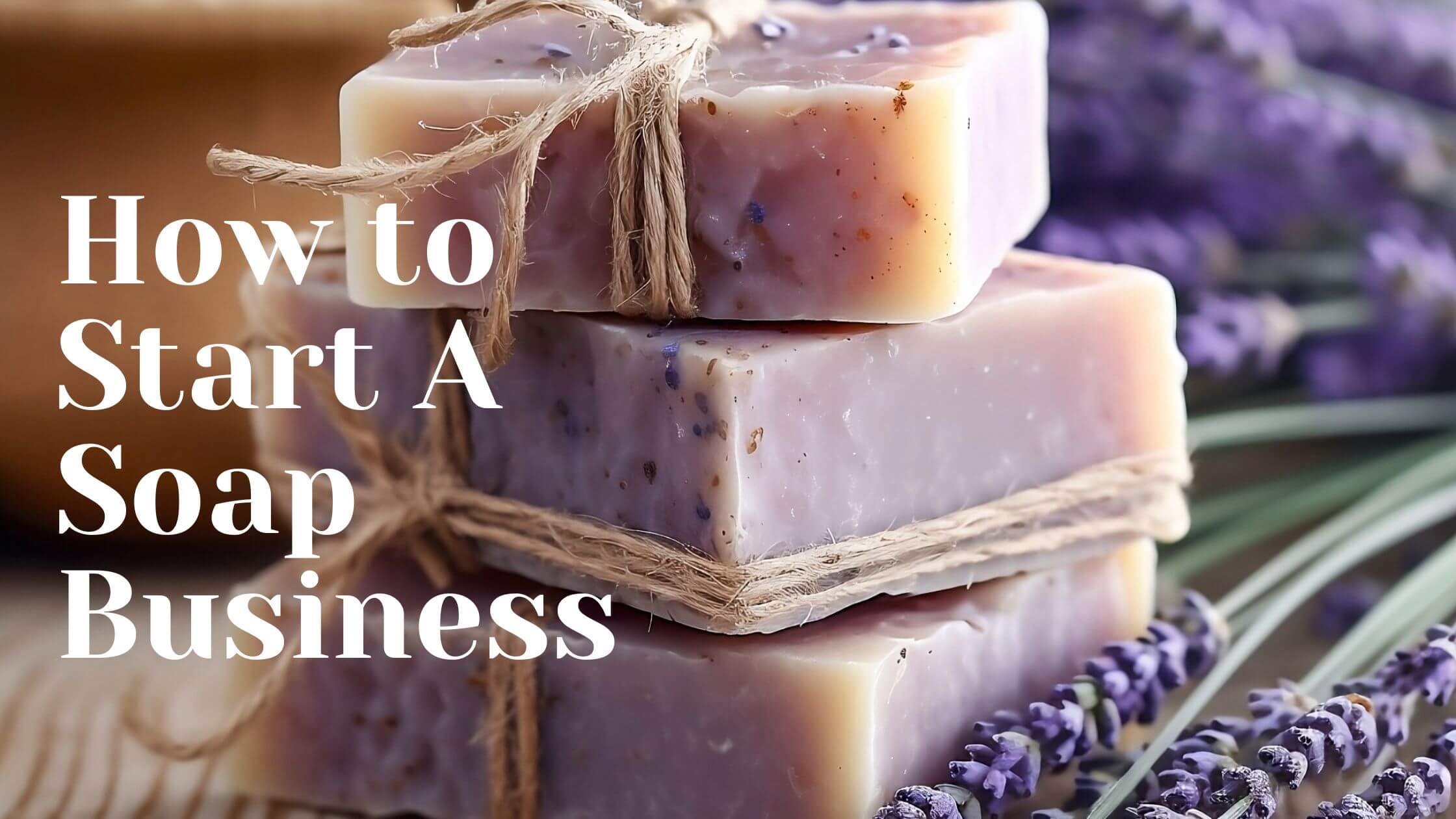Starting a clothing business can be an exhilarating journey filled with creativity, passion, and the potential for great success. As the fashion industry continues to evolve, with trends shifting and new styles emerging, there has never been a better time to dive into this vibrant marketplace.
Whether you’re a budding designer with a vision for your own brand or an entrepreneur looking to make your mark, understanding the intricacies of launching a clothing line is essential.
In this guide, I’ll walk you through the essential steps to turn your dream of owning a clothing business into reality. From identifying your niche and developing a solid business plan to sourcing materials and building an online presence, each section will equip you with the knowledge and tools you need to thrive. You’ll learn how to create a brand that resonates with your target audience, navigate the complexities of production, and implement effective marketing strategies to grow your business.
So, grab your sketchbook and let your imagination run wild!
A Step-by-Step Guide to Starting Your Clothing Business ( 8 Vital Steps )
The journey to starting your clothing business begins here, and with the right mindset and dedication, you’ll be well on your way to making your fashion dreams come true.
Step 1: Identify Your Niche
Identifying your niche is a crucial first step in starting a clothing business, as it helps define your brand’s identity and sets you apart from competitors.
Research current fashion trends:

Begin by researching current fashion trends to understand what styles are gaining popularity and what gaps exist in the market. Consider exploring various sources, such as fashion blogs, social media platforms, and trade shows to gather insights on emerging trends.
Analyze target demographics:
Don’t forget to analyze your target demographics. Who are the customers you want to reach? Consider factors such as age, gender, lifestyle, and purchasing behavior. Understanding your audience will help you tailor your offerings to meet their needs and preferences.
Define your unique selling proposition (USP):
Once you have a clear picture of the market landscape and your potential customers, define your unique selling proposition (USP). This could be anything from offering sustainable and ethically sourced materials to providing unique designs or exceptional quality. Your USP will be the cornerstone of your brand, helping you communicate what makes your clothing line distinct.
Choose a niche:
Choose a specific niche within the clothing industry. Options could include activewear, streetwear, formal wear, or plus-size fashion, among others. By focusing on a niche, you can concentrate your efforts on a specific segment, allowing for more targeted marketing and product development. This strategic approach will not only enhance your brand’s appeal but also foster a loyal customer base that resonates with your vision.
Step 2: Develop a Business Plan
A well-structured business plan is essential for the success of your clothing business. It serves as a roadmap, guiding you through the various stages of launching and operating your brand.
Key components of a business plan:
Start by crafting an executive summary, which provides a high-level overview of your business concept, goals, and the strategies you intend to employ. This section should capture the essence of your brand and its unique value proposition.
Also, don’t forget to conduct a thorough market analysis. This involves researching your competitors, understanding market trends, and identifying potential opportunities and challenges. Evaluate the strengths and weaknesses of existing clothing brands in your niche to determine where your business can fit in and stand out.
Your marketing strategy is another critical component of the business plan. Outline how you will promote your clothing line, including pricing strategies, promotional activities, and sales channels. Consider both online and offline marketing tactics, such as social media campaigns, influencer partnerships, and pop-up shops, to create a multi-faceted approach.
Moreover, provide estimates of your startup costs, expected revenues, and break-even analysis. This will help you understand the financial viability of your business and attract potential investors or lenders. Be realistic with your projections, taking into account both optimistic and pessimistic scenarios.
Set short-term and long-term goals:
Eet clear short-term and long-term goals. Short-term goals may include launching your first collection or reaching a specific sales target within the first year, while long-term goals could involve expanding your product range or entering new markets. These goals will help you stay focused and measure your progress over time.
Step 3: Source Materials and Production
Sourcing materials and establishing production processes are vital steps in bringing your clothing designs to life.
Find reliable suppliers:
Start by identifying reliable suppliers who can provide high-quality fabrics and materials that align with your brand’s vision. Attend trade shows, search online directories, or connect with local textile manufacturers to find potential partners.
Choose sustainable materials:
It’s essential to evaluate suppliers based on their quality, reliability, pricing, and ethical practices, especially if you aim to position your brand as sustainable or socially responsible.
Decide on manufacturing options (in-house vs. outsourcing):
Once you have secured your materials, consider the manufacturing options available to you. You can choose to produce your clothing in-house, which allows for greater control over quality and production timelines, or outsource to a third-party manufacturer. Each option has its pros and cons. In-house production can be more cost-effective for smaller runs and allows for direct oversight, but it may require more initial investment in equipment and skilled labor. Outsourcing can save time and resources but necessitates careful selection of manufacturing partners to ensure quality and ethical labor practices.
Ensure quality control:
Quality control is another crucial aspect of production. Establish clear guidelines for assessing the quality of materials and finished products, including specifications for stitching, fit, and durability. Implementing a thorough quality control process will help you maintain high standards and prevent costly returns or customer dissatisfaction.
Step 4: Brand Your Clothing Line
Branding is one of the most critical aspects of launching a successful clothing business. Your brand is not just your logo or the clothes you design—it’s the entire experience your customers associate with your business.
Craft a memorable brand identity:
Start by crafting a memorable brand identity that reflects your vision, values, and the personality of your clothing line. Ask yourself what emotions or lifestyle choices you want your brand to evoke. For example, are you aiming for a high-end luxury feel, or is your brand more about casual, sustainable fashion?
Design a compelling logo and packaging:
Focus on designing a compelling logo and packaging. Your logo should be simple, versatile, and recognizable. It will appear on everything from your website to your clothing labels, so it must resonate with your target audience. Packaging is equally important, especially for e-commerce brands. Creative and eco-friendly packaging can enhance the unboxing experience and leave a lasting impression on customers.
Develop a brand story that resonates with customers:
Your brand story is another vital piece of the branding puzzle. A well-crafted brand story can resonate emotionally with your customers, setting your clothing line apart from the competition. Explain the inspiration behind your brand, your mission, and how your values align with your target market. Whether it’s sustainability, craftsmanship, or inclusivity, sharing your story helps build trust and loyalty.
Consistency is key when building your brand. Ensure that your visual elements, tone of voice, and messaging are aligned across all platforms—whether it’s your website, social media, or marketing materials. A strong, cohesive brand identity not only attracts the right customers but also keeps them engaged, turning one-time buyers into loyal advocates.
Step 5: Build an Online Presence
In today’s digital age, having a strong online presence is essential for any clothing business. Make sure to build an active online presence to reach to your customers even better.
Create a user-friendly e-commerce website:
Create a user-friendly e-commerce website that reflects your brand’s identity and makes it easy for customers to browse and shop. Ensure the website is visually appealing, fast, and mobile-responsive, as many customers will shop on their phones. The design should be intuitive, with clear navigation, high-quality images of your products, and easy-to-understand product descriptions. An efficient checkout process, multiple payment options, and transparent shipping information can make or break the shopping experience.
Utilize social media for marketing:
Beyond your website, your online presence must extend to social media platforms, which are powerful tools for marketing and building a community around your brand. Platforms like Instagram, TikTok, and Pinterest are especially effective for clothing businesses due to their focus on visual content. Use these channels to showcase your designs, behind-the-scenes moments, and lifestyle content that resonates with your target audience. Engage with followers by responding to comments, asking questions, and sharing user-generated content. Building a community around your brand fosters loyalty and helps spread word-of-mouth awareness.
Importance of photography and visuals:
One of the most important aspects of your online presence is photography and visuals. Fashion is a highly visual industry, and customers want to see your products in high-quality images or videos. Consider hiring professional photographers or learning how to take professional-grade photos of your clothing line. Showcase different angles, close-ups of details, and lifestyle shots that help customers envision how they can wear your products.
Engage with your audience and build a community:

In addition to visuals, your content strategy should focus on telling your brand’s story and connecting with customers. Blog posts, newsletters, and video content can all be used to provide value to your audience, share styling tips, or discuss the inspiration behind your latest collection. Building a personal connection with your customers will encourage repeat purchases and brand loyalty.
Step 6: Launch Your Clothing Business
The launch of your clothing business is a significant milestone, and planning a strategic launch can set the stage for long-term success.
- Set a launch date and strategy: Begin by selecting an appropriate launch date that aligns with your production timeline, marketing efforts, and potential peak sales periods. For example, launching before a major holiday or season can boost visibility and sales, especially if your products cater to specific events or trends.
- Think of a launching strategy: Once you’ve set your launch date, create a launch strategy that builds anticipation and excitement among your target audience. Start by teasing your products on social media, sending email newsletters to potential customers, and collaborating with influencers or bloggers who align with your brand’s values. A countdown to the launch day or sneak peeks of your collection can create buzz and generate interest.
- Promoting your launch through various channels: A successful launch also includes promoting your business across multiple channels. This can involve hosting an online event or virtual fashion show, running limited-time promotions, or offering exclusive discounts to early customers. Leverage social media ads and SEO to drive traffic to your website and create eye-catching visuals that encourage users to engage with your brand.
- Offering special promotions or giveaways: To maximize impact, consider offering special promotions or giveaways during the launch. This could be a discount for first-time buyers, free shipping, or a gift with purchase for orders over a certain amount. Such offers incentivize customers to make their first purchase and share their experience with others, helping to grow your brand’s presence organically.
Your launch is just the beginning, so after the initial excitement fades, be prepared to maintain momentum. Keep communicating with your audience, share customer reviews and feedback, and continue to push new marketing initiatives to ensure long-term engagement with your clothing line.
Step 7: Manage Operations and Finances
Once your clothing business is up and running, managing operations efficiently is key to ensuring profitability and growth.
- Inventory management strategies: One of the first things you’ll need to master is inventory management. As a fashion entrepreneur, you must balance having enough stock to meet demand without overstocking items that may not sell quickly. Consider using inventory management software to track your stock levels, monitor sales patterns, and set up automatic reordering for popular products. You should also keep an eye on seasonal trends and adjust your inventory to reflect changing customer preferences.
- Track sales and expenses: Another critical area is tracking sales and expenses. Implement a robust accounting system to record all your transactions, from sales revenue to production costs. Keeping detailed financial records will help you understand your profit margins, identify cost-saving opportunities, and ensure you’re pricing your products correctly. It will also prepare you for tax season and make it easier to apply for loans or investors if needed. You can hire an accountant or use accounting software like QuickBooks or Xero to streamline this process.
- Set up accounting and bookkeeping systems: Establishing proper accounting and bookkeeping systems is essential to maintaining a clear overview of your business’s financial health. This includes categorizing expenses, tracking income, managing payroll (if you have employees), and paying business taxes. Setting up a separate business bank account and using professional accounting software will help you stay organized and avoid financial complications.
- Manage cash flow: Managing cash flow is another vital aspect of running your clothing business. While sales may fluctuate, especially in the early stages, it’s important to maintain a steady cash flow to cover your operating expenses like rent, utilities, and employee wages. Consider offering payment plans for wholesale orders or securing small business financing to cover any shortfalls during slower periods.
Step 8: Market and Grow Your Brand
Once your clothing business is up and running, the next challenge is expanding your customer base and growing your brand. Effective marketing strategies are crucial for creating awareness, building customer loyalty, and driving sales. The key is to focus on the channels and tactics that best resonate with your target audience and consistently communicate your brand’s unique identity.
- Leverage influencer marketing: Influencer marketing has become one of the most powerful tools for fashion brands. Collaborating with influencers—whether they’re fashion bloggers, Instagram personalities, or TikTok creators—can significantly amplify your brand’s reach. Start by identifying influencers who align with your brand’s aesthetic and values. Send them samples of your products or offer them a partnership where they showcase your clothing in exchange for compensation or free merchandise. Micro-influencers, who have smaller but highly engaged audiences, can often generate more authentic recommendations and interactions compared to bigger influencers. Their followers trust their opinions, and a genuine endorsement can boost your credibility and sales.
- Explore partnerships and collaborations: Another strategy is to explore partnerships and collaborations. Teaming up with other brands, whether in complementary sectors or within the fashion industry, can help you tap into new audiences. For instance, you could partner with a sustainable shoe brand if your clothing line focuses on eco-friendly fashion. Collaboration collections, joint giveaways, or cross-promotions on social media can help both brands reach new customers while reinforcing shared values.
- Implement effective advertising strategies (online and offline): Invest in effective advertising strategies to boost visibility and drive traffic to your e-commerce site or physical store. Start with digital advertising options like Facebook Ads, Instagram Ads, and Google Ads, which allow you to target specific demographics and interests. These platforms offer precise audience targeting based on age, location, behavior, and shopping habits, making it easier to reach potential customers. If you’re operating on a tight budget, focus on retargeting ads that remind people who have visited your website or abandoned their cart to come back and complete their purchase.
- Create valuable content: Beyond digital ads, don’t underestimate the power of content marketing. Create valuable content that provides more than just a sales pitch. This can include blog posts about fashion trends, how-to style guides, or videos showcasing the inspiration behind your latest collection. High-quality content builds trust and engages your audience, keeping your brand top-of-mind while positioning you as a leader in your niche. Regularly update your website’s blog and share this content on social media and through email newsletters to attract organic traffic.
Final Thoughts
Starting a clothing business is an exciting journey filled with creativity, challenges, and rewarding opportunities. From identifying your niche and developing a solid business plan to building your brand and growing your presence online, each step is crucial to ensuring the success of your venture. By focusing on delivering high-quality products that resonate with your target audience, leveraging effective marketing strategies, and maintaining efficient operations, you can build a clothing brand that not only stands out in a competitive market but also grows into a sustainable, thriving business.







